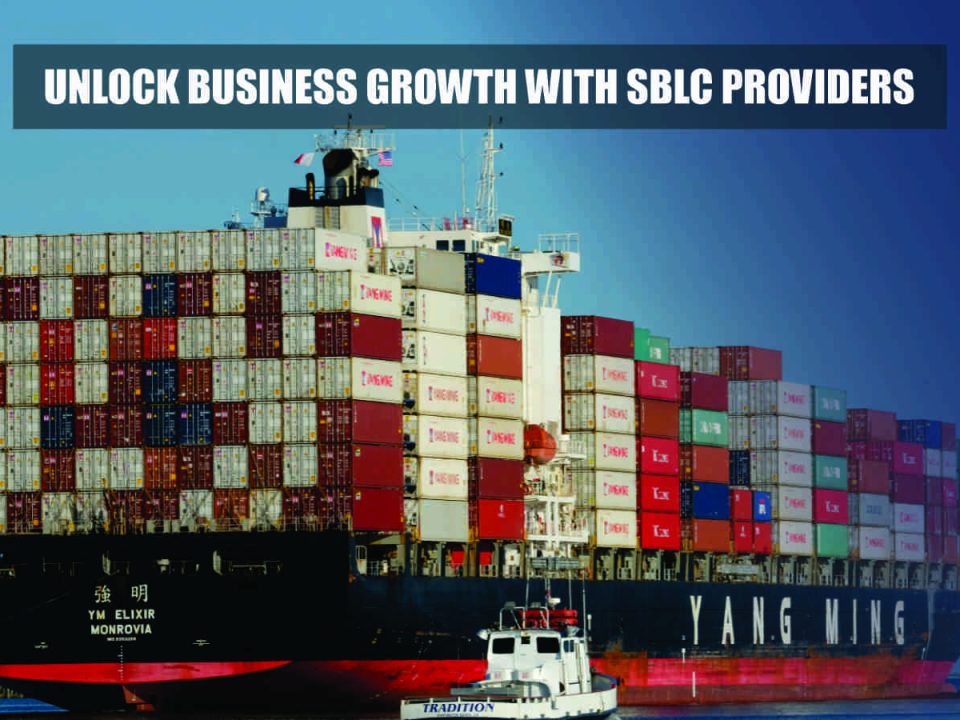5 Bold SBLC for Business Expansion Strategies to Win

Unleash Growth: No-Fail Business Finance & Loans Guide 2025
April 15, 20255 Bold SBLC for Business Expansion Strategies to Win
SBLC for Business Expansion & Trade Finance
Standby Letters of Credit (SBLCs) serve as powerful financial instruments for businesses pursuing expansion and engaging in trade finance. By providing a guarantee of payment, SBLCs facilitate secure transactions, enhance credibility, and unlock opportunities for growth. This article explores the strategic use of SBLCs for business expansion and trade finance, offering practical insights, a real-world example, a case study, and actionable steps to leverage this tool effectively. With a focus on SBLC benefits, application processes, and compliance, businesses can confidently navigate global markets.
Learn more from understanding sblc monetization in 2025
Understanding the Standby Letter of Credit (SBLC)
An SBLC, issued by a bank or financial institution like Artley Finance on behalf of a client, guarantees payment to a beneficiary if the client fails to meet contractual obligations. Unlike traditional letters of credit used for direct payment, SBLCs act as a safety net, ensuring financial security in high-stake transactions. Commonly used in international trade and business expansion, SBLCs build trust between parties by mitigating risks associated with non-payment or non-performance.
Businesses use SBLCs to secure contracts, finance projects, or guarantee performance in industries like construction, manufacturing, and import-export. According to Investopedia, SBLCs are versatile tools that enhance a company’s ability to compete in global markets by demonstrating financial reliability.
Key Features of an SBLC
- Guarantee of Payment: The issuing institution, such as Artley Finance, assures the beneficiary of payment if the applicant defaults.
- Flexibility: SBLCs support various transactions, including trade finance, project funding, and performance guarantees.
- Global Acceptance: Recognized under international banking standards, such as the Uniform Customs and Practice for Documentary Credits (UCP 600).
- Customizable Terms: Tailored to specific contract requirements, ensuring alignment with business objectives.
Why Use an SBLC for Business Expansion?
Business expansion often requires significant capital, reliable partners, and access to new markets. SBLCs address these needs by providing financial security and credibility. Here’s how SBLCs support growth:
Securing Large Contracts
When bidding for large contracts, particularly in international markets, businesses must demonstrate financial stability. An SBLC assures clients that the company can fulfill obligations, increasing the likelihood of winning contracts. For instance, a manufacturer expanding into a new region can use an SBLC to guarantee timely delivery of goods, building trust with distributors.
Accessing Trade Finance
Trade finance facilitates cross-border transactions by providing liquidity and reducing payment risks. SBLCs enable businesses to obtain financing from banks or suppliers by guaranteeing repayment. This allows companies to purchase inventory, expand operations, or enter new markets without depleting cash reserves.
Enhancing Credibility
In competitive markets, credibility sets businesses apart. An SBLC, backed by a trusted institution like Artley Finance, signals to partners and suppliers that a company has robust financial support. This strengthens relationships and opens doors to strategic partnerships, essential for scaling operations.
Mitigating Risks in International Trade
Expanding globally involves risks like currency fluctuations, political instability, and non-payment. SBLCs protect businesses by ensuring payment obligations are met, even in challenging environments. This security enables companies to pursue opportunities in emerging markets with confidence.

Get Started with Artley Finance SBLC for Business Expansion Today
Steps to Obtain and Use an SBLC
Obtaining an SBLC requires careful planning and coordination with financial institutions like Artley Finance. Follow these steps to secure and utilize an SBLC effectively:
- Assess Business Needs: Identify the purpose of the SBLC, such as securing a contract, financing trade, or guaranteeing performance. Determine the amount and duration required.
- Select a Reputable Institution: Choose a trusted provider like Artley Finance with expertise in issuing SBLCs and a strong international presence. Ensure adherence to global standards like UCP 600.
- Prepare Documentation: Submit financial statements, business plans, and contract details to the institution. Accurate documentation expedites the approval process.
- Negotiate Terms: Work with Artley Finance to define the SBLC’s terms, including the beneficiary, amount, expiry date, and conditions for invocation.
- Pay Fees: Institutions charge issuance and maintenance fees, typically a percentage of the SBLC amount. Budget for these costs to avoid surprises.
- Present the SBLC: Deliver the SBLC to the beneficiary as part of the contract or trade agreement. Ensure all parties understand the terms.
- Monitor Compliance: Track the SBLC’s validity and ensure compliance with its conditions to prevent disputes or invocation.
Real-World Example of SBLC in Action
Consider a mid-sized electronics manufacturer in the United States aiming to expand into Southeast Asia. To secure a $5 million contract with a regional distributor, the manufacturer must guarantee delivery within six months. The distributor, unfamiliar with the company, requests an SBLC to mitigate the risk of non-delivery.
The manufacturer approaches Artley Finance, which issues an SBLC for $5 million, naming the distributor as the beneficiary. The SBLC guarantees payment if the manufacturer fails to deliver the goods as agreed. With the SBLC in place, the distributor signs the contract, and the manufacturer secures financing from a trade finance provider to produce the goods. The expansion succeeds, and the SBLC remains unused, demonstrating its value as a risk-mitigation tool.
Best Practices for Using SBLCs
To maximize the benefits of SBLCs, businesses must adopt strategic approaches and avoid common pitfalls. Consider these best practices:
- Align with Business Goals: Ensure the SBLC supports specific expansion or trade objectives, such as entering a new market or securing a key contract.
- Choose Experienced Partners: Work with trusted providers like Artley Finance, familiar with SBLCs and international trade regulations.
- Maintain Clear Communication: Ensure all parties, including the beneficiary and institution, understand the SBLC’s terms to prevent disputes.
- Monitor Expiry Dates: Track the SBLC’s validity to avoid unexpected lapses or renewals.
- Budget for Costs: Account for issuance fees, collateral requirements, and potential legal expenses when planning SBLC use.
FAQs About SBLCs for Business Expansion and Trade Finance
What is the difference between an SBLC and a traditional letter of credit?
An SBLC serves as a secondary payment guarantee, invoked only if the applicant defaults, while a traditional letter of credit facilitates direct payment for goods or services. SBLCs focus on risk mitigation, whereas letters of credit streamline trade transactions.
How much does it cost to obtain an SBLC?
Costs vary by institution and transaction size, typically ranging from 1% to 5% of the SBLC amount annually. Additional fees may apply for amendments or renewals, depending on the provider’s policies.
Can small businesses use SBLCs for expansion?
Yes, small businesses can use SBLCs to secure contracts, access trade finance, or build credibility. However, they must demonstrate financial stability to the issuing institution and cover associated fees.
What are the risks of using an SBLC?
Risks include invocation due to non-compliance, high fees, and potential disputes over terms. Businesses must ensure clear agreements and monitor obligations to minimize these risks.
How long does it take to issue an SBLC?
Issuance typically takes 1-2 weeks, depending on the institution’s processes and the complexity of the transaction. Complete documentation and clear terms expedite the process.
The Bottom Line
Standby Letters of Credit offer businesses a strategic tool for expansion and trade finance. By securing contracts, enhancing credibility, and mitigating risks, SBLCs enable companies to compete in global markets and achieve sustainable growth. Through careful planning, collaboration with trusted providers like Artley Finance, and adherence to best practices, businesses can leverage SBLCs to unlock new opportunities. Whether entering new markets or financing trade, SBLCs provide the financial security needed to succeed. #SBLC #BusinessExpansion #TradeFinance
Contact Artley Finance today to explore solutions that drive business growth. Our experts will guide you through the process, ensuring seamless access to trade finance and expansion opportunities. Don’t miss out. Reach out now at www.artleyfinance.com and take the first step toward global success!
Let Us Help Your Business succeed!
Email us: finance@artleyfinance.com
Visit our website: www.artleyfinance.com




